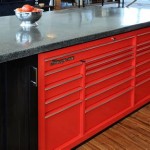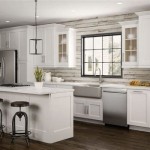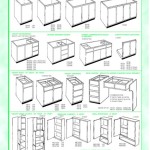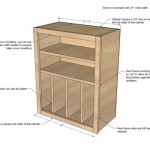Essential Aspects of Kitchen Cabinet Grease Remover
Kitchen cabinets, being constantly exposed to grease, cooking oils, and food residue, require regular cleaning to maintain their pristine condition. A kitchen cabinet grease remover is an indispensable tool in this regard, effectively removing stubborn grease and grime while preserving the integrity of your cabinet surfaces. This article delves into the essential aspects of kitchen cabinet grease removers, providing a comprehensive guide to their composition, usage, and precautions.
Composition of Kitchen Cabinet Grease Removers
Kitchen cabinet grease removers are typically formulated with a blend of surfactants, solvents, and builders. Surfactants, also known as detergents, reduce the surface tension of grease and water, allowing the remover to penetrate the grease layer and dissolve it. Solvents, such as isopropyl alcohol or mineral spirits, further dissolve the grease, while builders, like sodium carbonate or trisodium phosphate, help neutralize acids and enhance the cleaning action.
Types of Kitchen Cabinet Grease Removers
Kitchen cabinet grease removers come in various forms, including liquids, gels, and sprays. Liquid removers are versatile and can be applied directly to the greasy surface or diluted with water for milder cleaning. Gel removers adhere well to vertical surfaces, making them ideal for cleaning cabinet doors and other upright surfaces. Spray removers offer convenience and can be applied from a distance, reducing the risk of splatters.
Usage of Kitchen Cabinet Grease Removers
Before using a kitchen cabinet grease remover, read the manufacturer's instructions carefully to ensure proper application and avoid any potential damage to the cabinet surfaces. Apply the remover directly to the greasy area or dilute it as per the instructions. Allow it to dwell for the recommended time, typically a few minutes, to give the remover sufficient time to dissolve the grease. Wipe the surface clean with a damp cloth or sponge to remove the dissolved grease and excess cleaner.
Precautions When Using Kitchen Cabinet Grease Removers
While kitchen cabinet grease removers are effective at removing grease, it's crucial to use them with caution. Wear gloves to protect your hands from harsh chemicals, and ensure adequate ventilation by opening windows or using an exhaust fan to prevent inhaling harmful fumes. Test the remover on an inconspicuous area of the cabinet first to ensure it does not damage the finish or discolor the surface.
Avoid using abrasive cleaning tools or brushes, as they can scratch the cabinet surface. If the grease buildup is excessive, consider using a degreaser to break down the grease before applying the kitchen cabinet grease remover. Regularly cleaning your kitchen cabinets with a mild detergent solution can help prevent the accumulation of grease and grime in the first place.
Conclusion
Kitchen cabinet grease removers are essential cleaning agents for maintaining the cleanliness and longevity of your kitchen cabinets. By understanding their composition, types, and proper usage, you can effectively remove stubborn grease and grime while protecting the integrity of your cabinet surfaces. Always follow the manufacturer's instructions and exercise caution when using these removers to achieve the best possible results.

How To Remove Grease From Kitchen Cabinets 3 Methods Bob Vila

Krud Kutter 1 Quart Liquid Cleaner De For Grease On Multisurfaces Kk326 The Home Depot

The Very Best De For Kitchen Cabinets And How To Use It Flooring Girl

How To Clean Grimy Kitchen Cabinets With 2 Ingredients

How To Clean Sticky Grease Off Kitchen Cabinets Ovenclean

How To Remove Oven Grease From Kitchen Cabinets American Appliance Inc

Kitchen Cleaner Mr Muscle

Degrease Kitchen Cabinets With An All Natural Homemade Cleaner

Removing Grease From Kitchen Cabinets Clean Easy Cleaning S Deep
:max_bytes(150000):strip_icc()/ways-to-clean-wood-kitchen-cabinets-3017289-00-fb8e5ae9eb004ec6b968f9d53e74cd1e.jpg?strip=all)
Tips For Cleaning Food Grease From Wood Cabinets








